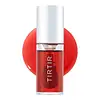What's inside
What's inside
 Key Ingredients
Key Ingredients

 Benefits
Benefits

 Concerns
Concerns

 Ingredients Side-by-side
Ingredients Side-by-side

Polyglyceryl-2 Isostearate/Dimer Dilinoleate Copolymer
EmollientDilinoleic Acid/Propanediol Copolymer
EmollientSimmondsia Chinensis Seed Oil
EmollientCorylus Avellana Seed Oil
EmollientHelianthus Annuus Seed Oil
EmollientParfum
MaskingVanillin
MaskingTocopheryl Acetate
AntioxidantAmmonium Glycyrrhizate
MaskingLithospermum Erythrorhizon Root Extract
Skin ConditioningGlycine Soja Oil
EmollientDiisostearyl Malate
EmollientCI 42090
Cosmetic ColorantBixa Orellana Seed Oil
EmollientTocopherol
AntioxidantPolyglyceryl-2 Isostearate/Dimer Dilinoleate Copolymer, Dilinoleic Acid/Propanediol Copolymer, Simmondsia Chinensis Seed Oil, Corylus Avellana Seed Oil, Helianthus Annuus Seed Oil, Parfum, Vanillin, Tocopheryl Acetate, Ammonium Glycyrrhizate, Lithospermum Erythrorhizon Root Extract, Glycine Soja Oil, Diisostearyl Malate, CI 42090, Bixa Orellana Seed Oil, Tocopherol
Polyglyceryl-2 Isostearate/Dimer Dilinoleate Copolymer
EmollientPolyglyceryl-2 Triisostearate
EmulsifyingCaprylic/Capric Triglyceride
MaskingIsostearic Acid
CleansingSimmondsia Chinensis Seed Oil
EmollientSilica Dimethyl Silylate
EmollientIsopropyl Sorbate
AntimicrobialTuna Extract
Skin Conditioning1,2-Hexanediol
Skin ConditioningMelia Azadirachta Leaf Extract
Skin ConditioningHippophae Rhamnoides Fruit Oil
Skin ProtectingParfum
MaskingEthylhexylglycerin
Skin ConditioningAbies Alba Seed Oil
AntimicrobialPentaerythrityl Tetra-Di-T-Butyl Hydroxyhydrocinnamate
AntioxidantMelia Azadirachta Flower Extract
Skin ConditioningCI 45380
Cosmetic ColorantCoccinia Indica Fruit Extract
Skin ConditioningSolanum Melongena Fruit Extract
Skin ConditioningAloe Barbadensis Leaf Extract
EmollientCurcuma Longa Root Extract
MaskingCoral Extract
Skin ConditioningOcimum Basilicum Leaf Extract
Skin ConditioningCamellia Seed Oil
Calendula Officinalis Extract
Skin ConditioningRosa Damascena Flower Oil
MaskingTocopherol
AntioxidantPolyglyceryl-2 Isostearate/Dimer Dilinoleate Copolymer, Polyglyceryl-2 Triisostearate, Caprylic/Capric Triglyceride, Isostearic Acid, Simmondsia Chinensis Seed Oil, Silica Dimethyl Silylate, Isopropyl Sorbate, Tuna Extract, 1,2-Hexanediol, Melia Azadirachta Leaf Extract, Hippophae Rhamnoides Fruit Oil, Parfum, Ethylhexylglycerin, Abies Alba Seed Oil, Pentaerythrityl Tetra-Di-T-Butyl Hydroxyhydrocinnamate, Melia Azadirachta Flower Extract, CI 45380, Coccinia Indica Fruit Extract, Solanum Melongena Fruit Extract, Aloe Barbadensis Leaf Extract, Curcuma Longa Root Extract, Coral Extract, Ocimum Basilicum Leaf Extract, Camellia Seed Oil, Calendula Officinalis Extract, Rosa Damascena Flower Oil, Tocopherol
 Reviews
Reviews

Ingredients Explained
These ingredients are found in both products.
Ingredients higher up in an ingredient list are typically present in a larger amount.
Parfum is a catch-all term for an ingredient or more that is used to give a scent to products.
Also called "fragrance", this ingredient can be a blend of hundreds of chemicals or plant oils. This means every product with "fragrance" or "parfum" in the ingredients list is a different mixture.
For instance, Habanolide is a proprietary trade name for a specific aroma chemical. When used as a fragrance ingredient in cosmetics, most aroma chemicals fall under the broad labeling category of “FRAGRANCE” or “PARFUM” according to EU and US regulations.
The term 'parfum' or 'fragrance' is not regulated in many countries. In many cases, it is up to the brand to define this term.
For instance, many brands choose to label themselves as "fragrance-free" because they are not using synthetic fragrances. However, their products may still contain ingredients such as essential oils that are considered a fragrance by INCI standards.
One example is Calendula flower extract. Calendula is an essential oil that still imparts a scent or 'fragrance'.
Depending on the blend, the ingredients in the mixture can cause allergies and sensitivities on the skin. Some ingredients that are known EU allergens include linalool and citronellol.
Parfum can also be used to mask or cover an unpleasant scent.
The bottom line is: not all fragrances/parfum/ingredients are created equally. If you are worried about fragrances, we recommend taking a closer look at an ingredient. And of course, we always recommend speaking with a professional.
Learn more about ParfumWe don't have a description for Polyglyceryl-2 Isostearate/Dimer Dilinoleate Copolymer yet.
This oil comes from the seeds of the desert shrub called Jojoba. It is more commonly known as jojoba oil, a non-comedogenic oil.
Jojoba oil does not contain fragrance and has many fatty-acids, making it a great soothing ingredient.
It also contains Vitamin E, a great moisturizing ingredient. Vitamin E is also an antioxidant and protects your skin against oxidative damage.
This ingredient humectant properties, meaning it helps draw moisture from the air. This helps keep your skin hydrated.
While jojoba has antibacterial properties, it is only able to kill some strains of bacteria.
Studies also show it helps in wound healing. In fact, Indigenous cultures have used jojoba as a moisturizer and to help treat burns for centuries.
Fun fact: Jojoba oil similar to natural human skin sebum, so it has a great effect on dry skin. It is also promising with helping to regulate sebum production.
Due to its fatty acid content, Jojoba oil may not be fungal acne safe. We recommend speaking with a professional if you have any concerns.
Learn more about Simmondsia Chinensis Seed OilTocopherol (also known as Vitamin E) is a common antioxidant used to help protect the skin from free-radicals and strengthen the skin barrier. It's also fat soluble - this means our skin is great at absorbing it.
Vitamin E also helps keep your natural skin lipids healthy. Your lipid skin barrier naturally consists of lipids, ceramides, and fatty acids. Vitamin E offers extra protection for your skin’s lipid barrier, keeping your skin healthy and nourished.
Another benefit is a bit of UV protection. Vitamin E helps reduce the damage caused by UVB rays. (It should not replace your sunscreen). Combining it with Vitamin C can decrease sunburned cells and hyperpigmentation after UV exposure.
You might have noticed Vitamin E + C often paired together. This is because it is great at stabilizing Vitamin C. Using the two together helps increase the effectiveness of both ingredients.
There are often claims that Vitamin E can reduce/prevent scarring, but these claims haven't been confirmed by scientific research.
Learn more about Tocopherol